Communication in the Workplace
Construction can be dangerous business if people do not fulfill their responsibilities for on-site health and safety. Communication amongst supervisors, employers, and workers is necessary to ensure all staff members are adhering to their health and safety policies and program. You should also be aware of other people’s responsibilities, so you know who to talk to if you see a hazard.

Communicating To Workers
There are a few ways companies can ensure health and safety is met in the workplace including the following:
- Conducting toolbox/safety talks on-site
- Instructing employees on any new legislation they ought to be made aware of
- Training employees in legislatively required training, such as Working at Heights or Standard First Aid
- Developing and implementing a health and safety program/policies
- Ensuring health and safety boards are fully equipped with all the necessary employment standards posters.
- Ensuring compliance with the health and safety program by all employees, subcontractors, suppliers, etc.
Workplace Responsibilities
There are different responsibilities between workers, employers, and supervisors. The different responsibilities of workplace parties are defined in the Occupational Health and Safety Act, (O. Reg. 213/91) – Regulations for Construction Projects. It is important to define these responsibilities to ensure that there is no miscommunication amongst the workers, which may lead to a potential workplace injury. For example, according to section 156.2(1) of the Reg. 213/91 in the Occupational Health and Safety Act, it is the responsibility of the employer to ensure that there are written measures and procedures in place for drilling operations that are meant to protect the health and safety of all workers before the start of any drilling operation.
Toolbox/Safety Talks
Specifically, toolbox/safety talks are a great way to communicate amongst your workers on-site. Each toolbox/safety talk is designed to inform workers of any site-specific hazards they may be exposed to, and ensure they know what to do in the event of those hazards. Toolbox/safety talks may range from a variety of topics and/or concerns including the dangers of working with Asbestos, emergency preparedness and prevention, working at heights, and so on.
Health and Safety Board
Another way employers and supervisors can communicate with their employees is by ensuring their health and safety boards follow all applicable legislation in Ontario. To make sure workers understand their rights and responsibilities, it is necessary to put in place the posters required in the workplace, including a “Health and Safety at Work: Prevention Starts Here” poster. To learn more about what your workplace may require, contact us at Safety First Consulting to hear how we can help!

